 The Annual Abraham Lincoln Institute (ALI) Symposium is set for March 22, 2025, at historic Ford’s Theatre in downtown Washington, DC. The full day program starts at 9 am and runs to 5 pm.
The Annual Abraham Lincoln Institute (ALI) Symposium is set for March 22, 2025, at historic Ford’s Theatre in downtown Washington, DC. The full day program starts at 9 am and runs to 5 pm.
All tickets are free but please register in advance on the Ford’s Theater website: https://fords.org/event/abraham-lincoln-institute-symposium/
ALI has been organizing this annual symposium for many years, first at the National Archives and now at Ford’s Theatre. ALI provides free, ongoing education on the life, career, and legacy of President Abraham Lincoln. Headquartered in Washington, D.C., ALI offers resources for educators, governmental and community leaders, and the general public through symposia, seminars, lectures, and special events.
Ford’s Theatre is both a working theater and a national historic site. The box where Lincoln was assassinated is maintained in the condition that it was that night, and Lincoln scholars and the general public alike make pilgrimages to the site. There is also a museum on the lower floor. Standing on the stage gives somewhat of an existential feeling, as if you are transported back in time to that fateful night. For nearly a decade, Ford’s has also generously provided the theater space to the Abraham Lincoln Institute for its annual symposium. I was honored to have been one of the five speakers for the 2023 symposium, during which I presented about my book, Lincoln: The Fire of Genius, and in particular, how Lincoln helped modernize America. This year, 2025, I will again be on stage, this time to introduce one of the speakers.
In 2025, there is another stellar group of scholars to discuss various aspects of Lincoln’s life, the times, and the tensions.
2025 Symposium Speakers
Hilary Green
Unforgettable Sacrifice: How Black Communities Remembered the Civil War
Manisha Sinha
The Rise and Fall of the Second American Republic, 1860-1920
Jon Grinspan
Wide Awake: The Forgotten Force that Elected Lincoln and Spurred the Civil War
Harold Holzer
Brought Forth on This Continent: Abraham Lincoln and American Immigration
Michael Vorenberg
Lincoln’s Peace: The Struggle to End the Civil War
After the final speaker, there will be a panel of all the speakers moderated by one of ALI’s prominent members.
For more information about ALI, check out their website at https://lincoln-institute.org/
[Photo compliments of Ford’s Theatre]

Coming in February 2026: Unable to Escape This Toil
Available now – Lincoln: The Fire of Genius: How Abraham Lincoln’s Commitment to Science and Technology Helped Modernize America is available at booksellers nationwide.
Limited signed copies are available via this website. The book also listed on Goodreads, the database where I keep track of my reading. Click on the “Want to Read” button to put it on your reading list. Please leave a review on Goodreads and Amazon if you like the book.
You also follow my author page on Facebook.
David J. Kent is President of the Lincoln Group of DC and the author of Lincoln: The Fire of Genius: How Abraham Lincoln’s Commitment to Science and Technology Helped Modernize America and Lincoln: The Man Who Saved America.
His previous books include Tesla: The Wizard of Electricity and Edison: The Inventor of the Modern World and two specialty e-books: Nikola Tesla: Renewable Energy Ahead of Its Time and Abraham Lincoln and Nikola Tesla: Connected by Fate.



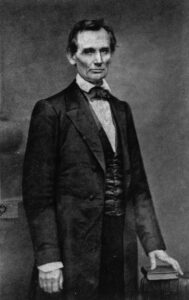 In February 1860, the western-bred Abraham Lincoln must have been astonished by the hustle and bustle around lower New York City. Having crossed the Hudson River from Jersey City to Manhattan, Lincoln made his way to the Astor House, one of most luxurious hotels in New York City, conveniently located near City Hall and Publishers Row (aka, Newspaper Row or Printing House Square) housing the city’s most important newspapers. New York City had grown by over fifty percent just in the last decade, many of whom were immigrants from Ireland, Germany, and other European nations. If Lincoln’s room was on the ground floor of the Astor House, he would have looked out on St. Paul’s Chapel, built in 1766 and where George Washington attended services immediately after taking the oath of office as the first president of the United States. No doubt Lincoln would have looked into the chapel. Today, from a vantage point on Broadway, you can see the new One World Trade Center looming behind the Chapel’s historic spire. From the other side, standing in the burying ground facing the skyscraper, is a “Bell of Hope” rung every year on September 11 to reflect both the mourning of that day and the Chapel’s role as a refuge during that warm, clear cataclysmic day in 2001.
In February 1860, the western-bred Abraham Lincoln must have been astonished by the hustle and bustle around lower New York City. Having crossed the Hudson River from Jersey City to Manhattan, Lincoln made his way to the Astor House, one of most luxurious hotels in New York City, conveniently located near City Hall and Publishers Row (aka, Newspaper Row or Printing House Square) housing the city’s most important newspapers. New York City had grown by over fifty percent just in the last decade, many of whom were immigrants from Ireland, Germany, and other European nations. If Lincoln’s room was on the ground floor of the Astor House, he would have looked out on St. Paul’s Chapel, built in 1766 and where George Washington attended services immediately after taking the oath of office as the first president of the United States. No doubt Lincoln would have looked into the chapel. Today, from a vantage point on Broadway, you can see the new One World Trade Center looming behind the Chapel’s historic spire. From the other side, standing in the burying ground facing the skyscraper, is a “Bell of Hope” rung every year on September 11 to reflect both the mourning of that day and the Chapel’s role as a refuge during that warm, clear cataclysmic day in 2001.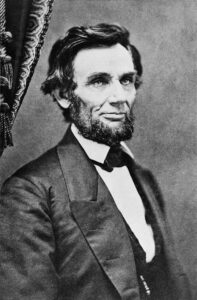 The newly bearded President-Elect Abraham Lincoln is making his way from Springfield, Illinois to Washington for his inauguration as president of the United States. But today, February 18, 1861, he was spending an eventful day traveling to Albany, New York.
The newly bearded President-Elect Abraham Lincoln is making his way from Springfield, Illinois to Washington for his inauguration as president of the United States. But today, February 18, 1861, he was spending an eventful day traveling to Albany, New York.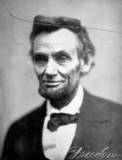 While Abraham Lincoln had a well-deserved reputation as a soft touch during the Civil War, readily finding excuses to offer mercy to Union soldiers who had fallen asleep or abandoned their posts, he also approved the hanging of the only slave trader ever to be executed by the United States. Captain Nathaniel Gordon was a repeat offender, caught with nearly 900 enslaved men, women, and children crammed into the tiny space below decks off the coast of Congo. But Gordon wasn’t particularly worried. For the first 40+ years of the law that made international slave trading illegal and punishable by death, no man was ever executed. Why now? And why by Lincoln?
While Abraham Lincoln had a well-deserved reputation as a soft touch during the Civil War, readily finding excuses to offer mercy to Union soldiers who had fallen asleep or abandoned their posts, he also approved the hanging of the only slave trader ever to be executed by the United States. Captain Nathaniel Gordon was a repeat offender, caught with nearly 900 enslaved men, women, and children crammed into the tiny space below decks off the coast of Congo. But Gordon wasn’t particularly worried. For the first 40+ years of the law that made international slave trading illegal and punishable by death, no man was ever executed. Why now? And why by Lincoln?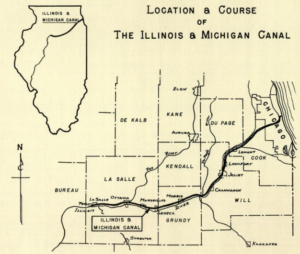 Abraham Lincoln was a steady proponent of Internal Improvements projects in Illinois. That said, there were problems. The few projects initiated randomly to encourage widespread district support resulted in a hodgepodge of disconnected rail lines, many of which ran only a few miles to nowhere in particular. Most projects simply disappeared.
Abraham Lincoln was a steady proponent of Internal Improvements projects in Illinois. That said, there were problems. The few projects initiated randomly to encourage widespread district support resulted in a hodgepodge of disconnected rail lines, many of which ran only a few miles to nowhere in particular. Most projects simply disappeared. Abraham Lincoln was always interested in technology, so when the Civil War arrived as soon as he was inaugurated, he worked hard to convince the usually conservative military to employ the latest technological advances. One such advance caused him to look to the skies to give every advantage to Union troops. That was the use of balloons in war.
Abraham Lincoln was always interested in technology, so when the Civil War arrived as soon as he was inaugurated, he worked hard to convince the usually conservative military to employ the latest technological advances. One such advance caused him to look to the skies to give every advantage to Union troops. That was the use of balloons in war.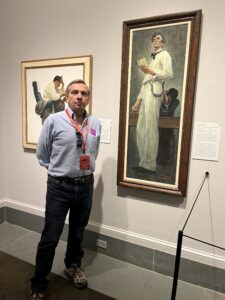 As 2024 comes to an end, it’s time to recap how it all went in the writer’s life. At least for this one writer. Once again, it was a busy year, with some residual events related to Lincoln: The Fire of Genius, some new obligations, and some really big news (really!). You can check out my other year-end posts by reading about
As 2024 comes to an end, it’s time to recap how it all went in the writer’s life. At least for this one writer. Once again, it was a busy year, with some residual events related to Lincoln: The Fire of Genius, some new obligations, and some really big news (really!). You can check out my other year-end posts by reading about 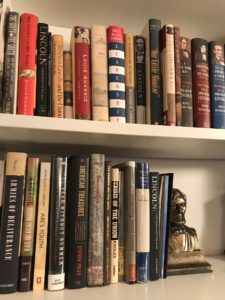 How time flies. The year 2024 is almost over and I think I’ve finished accumulated new books for the year, to it’s time for my annual Abraham Lincoln book acquisitions post. As you’ll quickly see, my goal to reduce the number of books I buy has been relatively successful-the total number of books acquired is definitely fewer-coming in at 25 new acquisitions. Reducing the total number of books? Not so successful. You can read about past years acquisitions by
How time flies. The year 2024 is almost over and I think I’ve finished accumulated new books for the year, to it’s time for my annual Abraham Lincoln book acquisitions post. As you’ll quickly see, my goal to reduce the number of books I buy has been relatively successful-the total number of books acquired is definitely fewer-coming in at 25 new acquisitions. Reducing the total number of books? Not so successful. You can read about past years acquisitions by 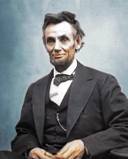 On this date, December 11, 1862, Abraham Lincoln transmitted to the U.S. Senate his response to their request that he “furnish the Senate with all information in his possession touching the late Indian barbarities in the State of Minnesota, and also the evidence in his possession upon which some of the principal actors and head men were tried and condemned to death.”
On this date, December 11, 1862, Abraham Lincoln transmitted to the U.S. Senate his response to their request that he “furnish the Senate with all information in his possession touching the late Indian barbarities in the State of Minnesota, and also the evidence in his possession upon which some of the principal actors and head men were tried and condemned to death.”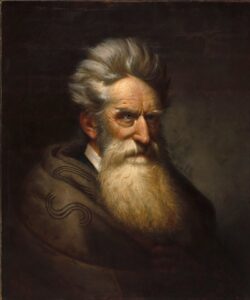 Back in the days when inciting an insurrection against the government was considered disqualifying, on December 2, 1859, abolitionist John Brown was hanged.
Back in the days when inciting an insurrection against the government was considered disqualifying, on December 2, 1859, abolitionist John Brown was hanged.






